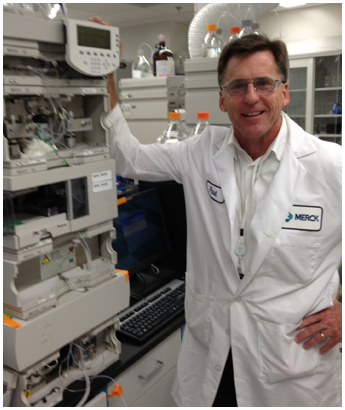About the Chief Scientific Officer and Founder
Dr. Harmon obtained his B.S. degree in Chemistry from the University of Delaware in 1984 and his Ph.D. in Analytical Chemistry from the University of Pittsburgh in 1990. He then spent two years at the National Institutes of Health (Bethesda, MD) in a Post-Doctoral position. Dr. Harmon then took an opportunity with the Liposome Company (Princeton, NJ) for two years, before joining Merck & Co. Inc. (West Point, PA) at which Dr. Harmon worked for the next 22 years. In 2016, Dr. Harmon retired from Merck & Co. and established Pharxmon Consulting, LLC where he has since brought his pharmaceutical expertise to his clients. A curriculum vita (CV) detailing Dr. Harmon's role and experiences is provided in the first link below.
The unique aspect of Dr. Harmon's Industrial career in the Pharmaceutical Sciences was his commitment to staying close to the science, in the laboratory, conducting, and directing analytical experiments to create a deeper technical understanding of critical developmental issues. In a sense Dr. Harmon has been able to have an academic type career, but in the context of a large pharmaceutical company developmental pipeline (many rapidly moving drug candidate programs). Post graduate school, Dr. Harmon has authored/coauthored over 30 peer reviewed manuscripts in Journals such as Journal of Pharmaceutical Sciences. This environment along with Dr. Harmon's implicit interest in understanding "how things really work" have led to a keenly pragmatic yet deeply technical problem solving capability.
|
Dr. Harmon's CV provides details of his role in supporting pharmaceutical drug candidates’ development efforts. One area of deep expertise is drug degradation, in particular understanding oxidative drug degradation pathways. Dr. Harmon authored the chapter on oxidative susceptibility testing in "Pharmaceutical Stress Testing" (2nd Edition; Eds. Baertschi, Alsante, Reed) and has eight other publications around oxidative degradation of drugs (references 9, 3, 6-7, 11, 14, 16-18, 20 in CV; PDF's available on “Chemical Degradation” page). Dr. Harmon is recognized as an industry expert in this field and has given invited talks at a variety of conferences around oxidation. The role of tablet excipients in producing new degradants, excipient enhancement of drug oxidation rates as well as excipient induced drug disproportionation have all be studied by Dr. Harmon (references 8, 14, 19, 20 in CV).
During the last 5-10 years of his Merck & Co. Inc. experience, Dr. Harmon's efforts also focused on dissolution processes of enabled formulations and poorly soluble drug particles. Simple experimental approaches to measuring effective dissolution rates from the entire dosage form, in bio relevant dissolution media have been developed. Dr. Harmon has also detailed dissolution events occurring from amorphous solid dispersions (see dissolution related scientific publications 4, 5, 10, 13 in CV; PDF's available on “Dissolution Rate Optimization” page 3). These detailed studies provide Dr. Harmon with valuable and unique insights into optimizing dissolution rates, thus optimizing human exposures of poorly water-soluble drugs from pharmaceutical formulations.
|

|
Most recently, Dr. Harmon has contributed to the understanding of nitrosamine impurities in drug products by publishing two papers in the Journal of Pharmaceutical Sciences (references 1, 2 in CV; PDF’s available on “Chemical Degradation” page). The first manuscript highlights the potential role of formaldehyde in facilitating the reaction of secondary amines with nitrite ion directly (giving the nitrosamine under neutral pH conditions). The second document details the first chemical pathway suggested for NDMA formation in ranitidine drug substance. In addition, below are links to PDFs of 6 other selected publications of Dr. Harmon, which reflect other aspects of his pharmaceutical technical depth such as excipient induced drug disproportionation and isolation and identification of low level impurities.